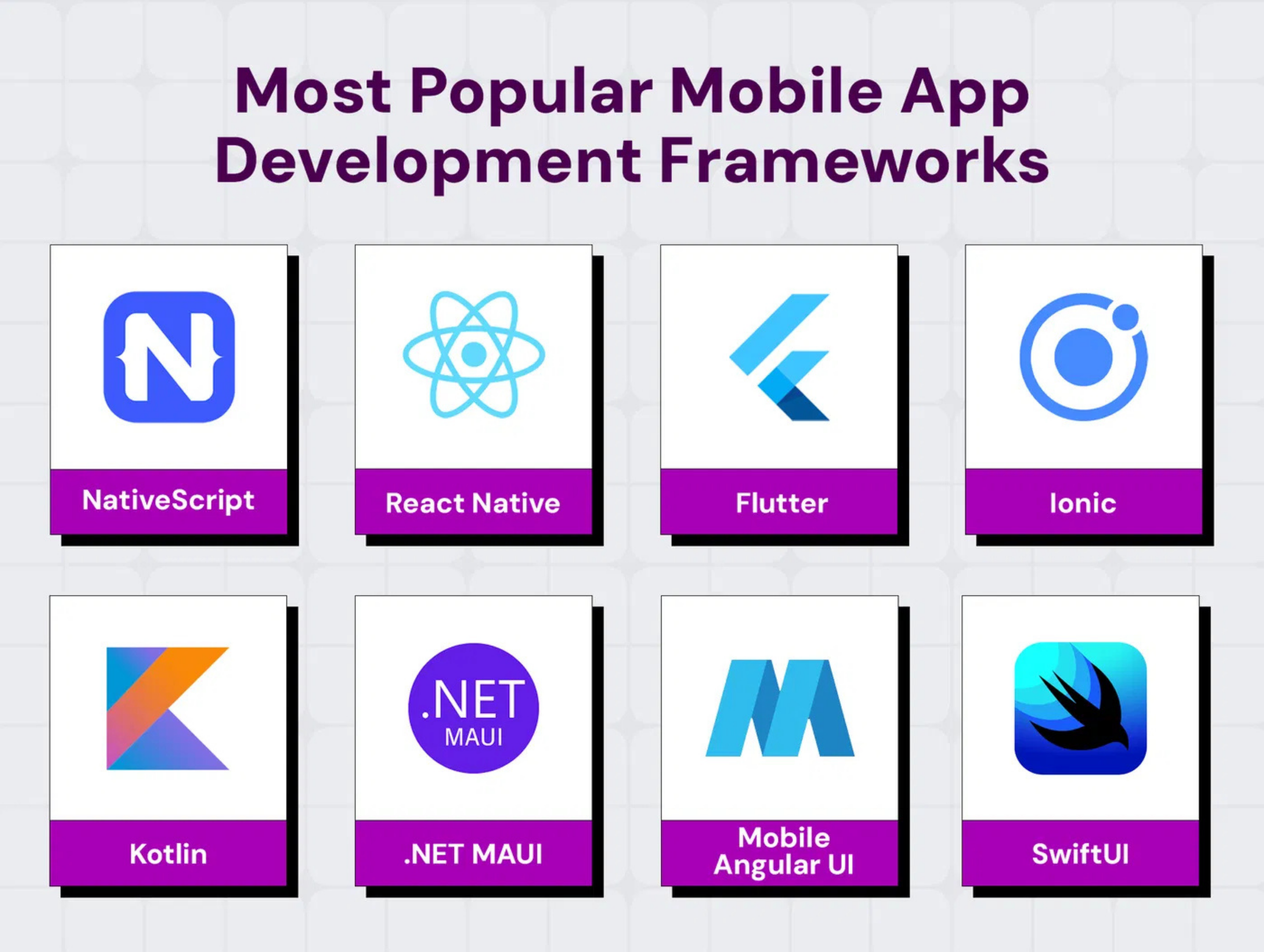Elite Code Support
Typically replies in a few minutes👋 Hi there! How can we help you today?

So you have an app idea. You already know the features you want. Maybe you’ve even sketched them out. That’s a fantastic start!
But turning that idea into a real, working app takes a smart approach. One of the most important choices you’ll face is picking the right mobile app development framework. Think of it as the foundation your entire app will stand on.
Choose the right framework, and you’ll build faster, control costs, and deliver an experience your users will love. Choose poorly, and you risk delays, extra costs, or an app that just doesn’t work right. In 2025, you’ll have more options than ever. From trusted favorites to exciting new contenders, there’s a framework out there for almost every project and team.
This guide will help you understand what the most popular mobile app development frameworks do best and how to choose the one that sets your app up for success.
A mobile app development framework is a set of tools that helps you build apps faster. It gives you the structure, tools, and resources you need so you don’t have to start from scratch or hand-code every detail.
Think of it as a ready-made template with all the essentials built in. Frameworks usually include things like the app’s core structure, SDKs, pre-built UI components, libraries, and debugging tools—so you can focus on designing features and creating a great experience instead of reinventing the basics.
For example, Google’s Flutter lets you build fast, attractive apps for both Android and iOS with one codebase. Facebook created React Native, which does something similar but uses familiar web-based technologies. Jetpack Compose (for Android) and SwiftUI (for Apple) simplify modern UI development for their respective platforms.
Choosing the right technology and platform is vital. To simplify your decision, here's a quick look at the three main types: native, hybrid, and mobile web app frameworks.
Native frameworks provide optimal performance and full access to device capabilities. They’re tailored to a specific platform (iOS or Android), so you’ll create separate versions for each. This typically costs more time and money but delivers the best possible experience for users.
These frameworks let you build apps that run in a mobile browser. They’re ideal when you want to reach a wide audience quickly and affordably. However, they can’t access every device feature and the experience may not feel fully native.
Hybrid platforms combine web and native approaches—one codebase that runs across platforms. They’re cost-effective and fast for many projects, though performance may lag behind fully native solutions on complex or graphics-heavy apps.
The global mobile application market is rapidly expanding—now is the ideal time to choose the appropriate framework and capitalize on this growth.
Below are some of the most popular frameworks you’ll encounter. Each one has strengths and trade-offs—pick the one that fits your project goals, team skills, and budget.
Languages: JavaScript, TypeScript
NativeScript enables fully native apps using a single codebase and provides direct access to native APIs. It’s a strong choice if you need near-native performance and full device access while using JavaScript/TypeScript.
When to use: Cross-platform with near-native performance, teams familiar with JS/TS/Angular/Vue.
Language: JavaScript
React Native lets you build native apps for iOS and Android from one codebase. It offers near-native performance, a massive ecosystem, and fast iteration (Hot Reload). Ideal for UI-rich apps and teams with React experience.
When to use: Quick cross-platform development, frequent UI updates, JavaScript/React teams.
Language: Dart
Flutter is Google’s UI toolkit for building beautiful, high-performance apps for mobile, web, and desktop from a single codebase. It’s powerful for custom UI, animations, and fast development with Hot Reload.
When to use: Consistent cross-platform UI, complex custom designs, tight deadlines.
Language: JavaScript (Angular, React, Vue)
Ionic builds hybrid apps and PWAs using web technologies (HTML/CSS/JS). It’s excellent for rapid development with a large library of UI components and smooth cross-platform behavior.
When to use: Teams skilled in web tech who want fast delivery across mobile and web.
Language: Swift
SwiftUI is Apple’s modern, declarative UI framework. It simplifies UI development across Apple platforms and is great for new native iOS/macOS/watchOS/visionOS apps.
When to use: Apple-only apps, teams with Swift expertise, modern UI needs.
Language: Kotlin
KMP lets you share business logic across Android, iOS, web, and backend while keeping native UIs. It’s ideal when you want code reuse without sacrificing native quality.
When to use: Shared logic across platforms, Kotlin-skilled teams, multi-platform expansion.
Languages: C#, XAML
.NET MAUI is Microsoft’s cross-platform solution for building native apps with a shared .NET codebase. It’s a strong fit for teams invested in the .NET ecosystem and Visual Studio.
When to use: Existing .NET teams targeting multiple platforms with C#.
Language: JavaScript (AngularJS + Bootstrap)
Mobile Angular UI is a lightweight option for responsive, mobile-first web apps using AngularJS and Bootstrap components. It’s suited for quick prototyping and hybrid web-first apps.
No single framework is perfect for every project. Your decision should be guided by:
When comparing frameworks, look at ecosystem maturity, documentation quality, plugin availability, and the ease of hiring developers with the required skill set. A strong community and solid tooling can save time and reduce risk.
Choosing the right framework is a strategic decision that impacts your app’s speed to market, cost, and long-term success. As a mobile app development partner, Elite Code Technologies understands the trade-offs of every platform. We’ll help you choose the right tech stack for your idea using data, hands-on experience, and a business-first approach.
Whether you need a prototype, a full product build, or ongoing support, Elite Code Technologies can guide your project from concept to launch. Let’s build something great—together.



